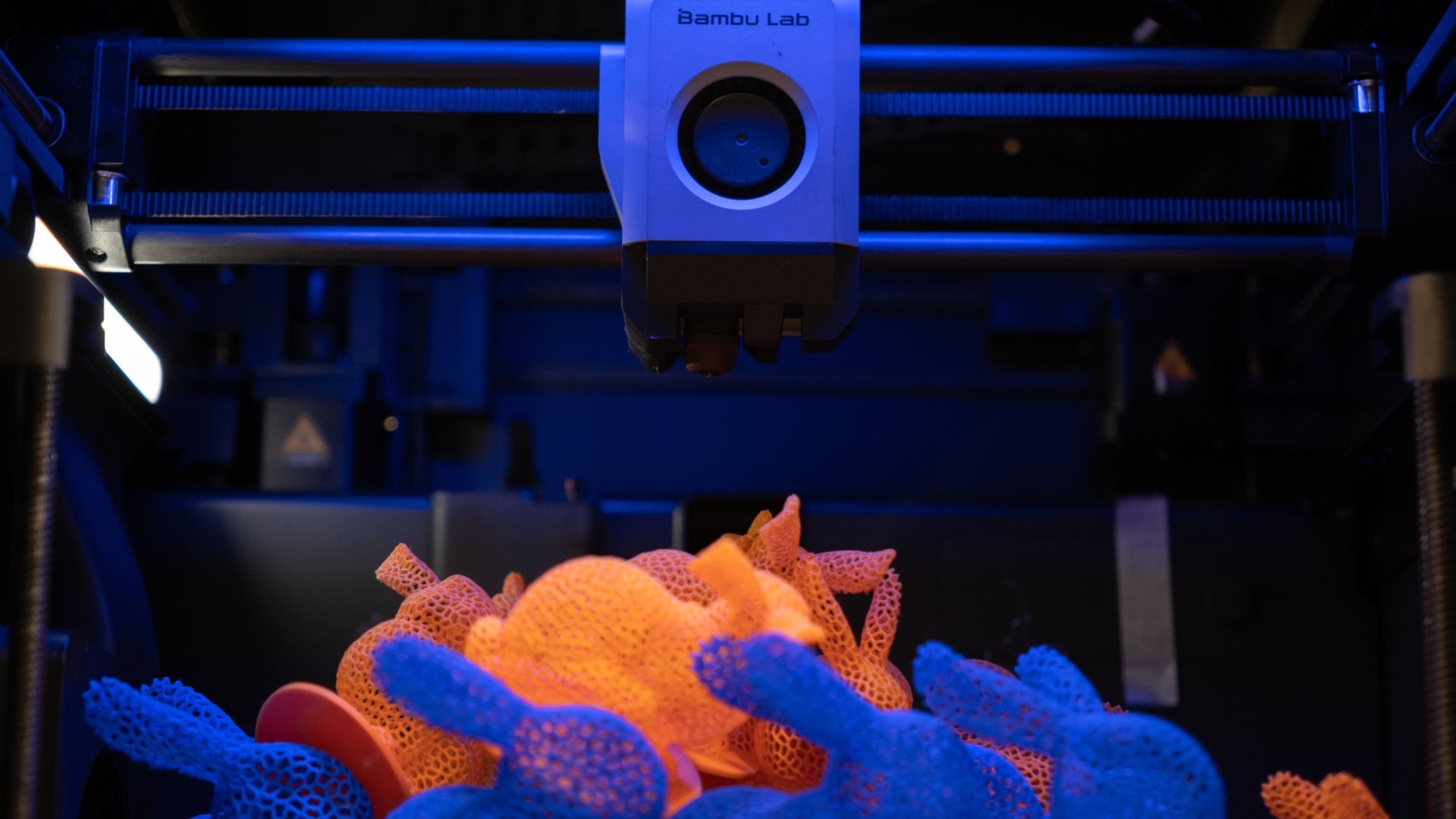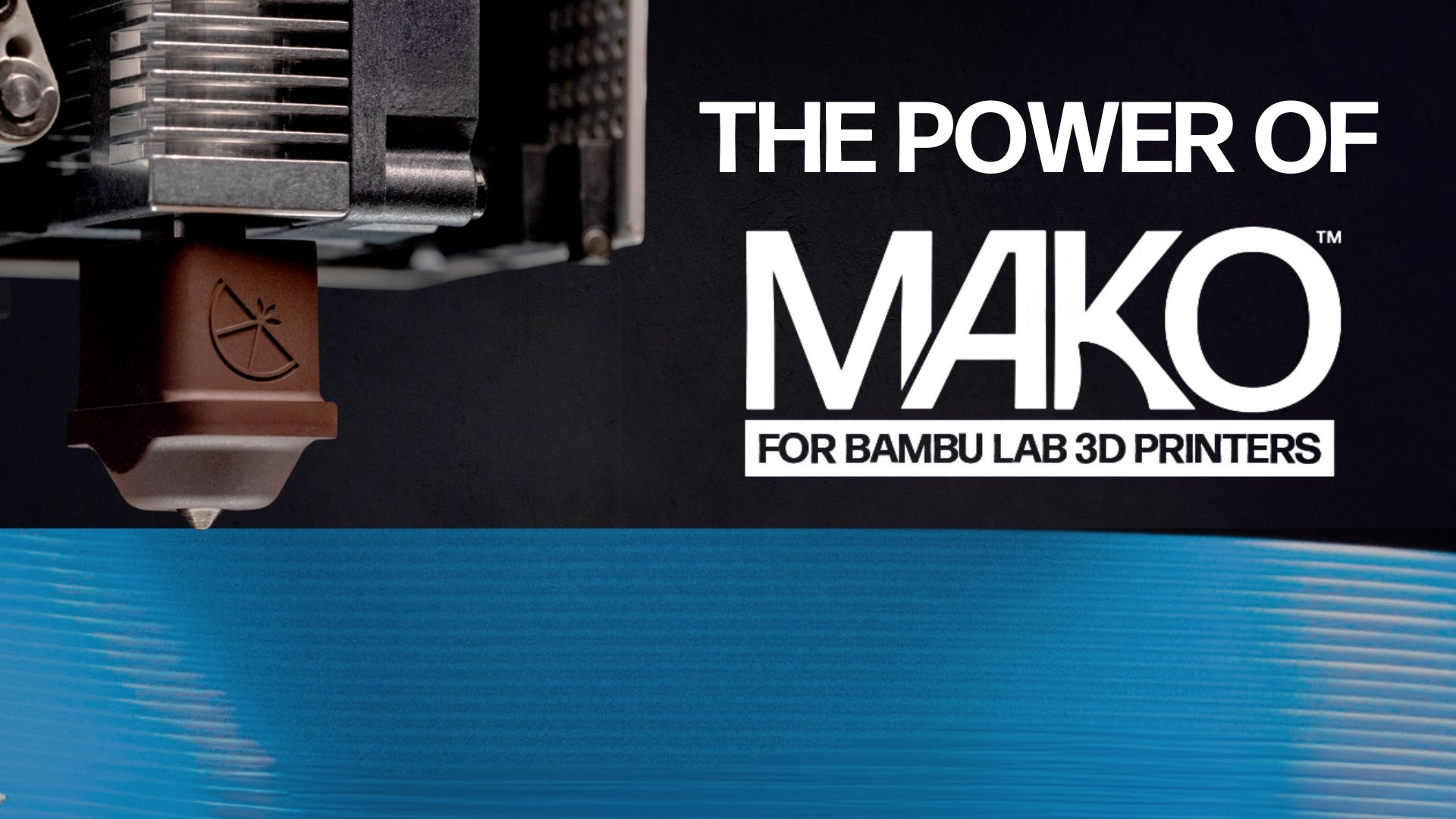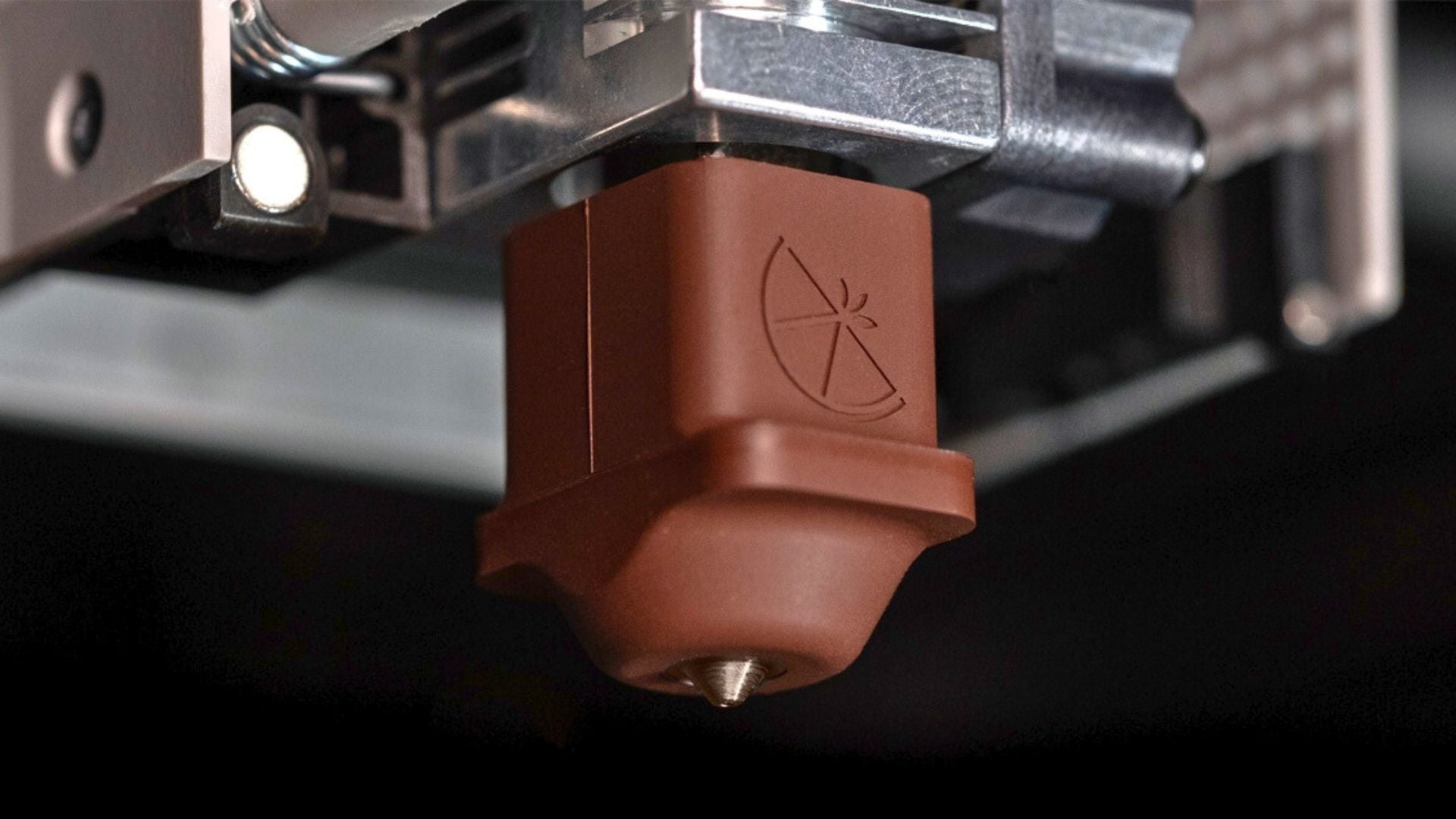
Why Does Additive Manufacturing Matter?
Daniel Barousse and Peyton Shelton
In a rapidly evolving world, additive manufacturing, commonly called 3D printing, is emerging as a groundbreaking technology with the potential to reshape industries and drive positive change. But why does additive manufacturing matter, and why has it captured the attention of innovators, entrepreneurs, and enthusiasts worldwide?
Additive manufacturing offers numerous advantages that catalyze progress and better humanity, like promoting supply chain transparency, reducing our ecological footprint, improving national security, empowering small businesses, and sparking innovation.
Supply Chain Transparency
The globalization of manufacturing has undoubtedly brought cost reductions and improved quality of life. However, it has also raised concerns about labor exploitation in certain regions. Many products we encounter daily, such as silica gel and cocoa beans, are sourced from areas where modern day slave labor is still prevalent (which is part of why we use activated alumina produced in the Southern United States for our Filament Drying Desiccant).
By leveraging additive manufacturing, companies and consumers have the potential to drive supply chain transparency and accountability. The ability to produce goods locally and on demand reduces the reliance on global supply chains that may involve unethical practices. Instead, additive manufacturing empowers businesses to have direct control over their production processes and ensures that human rights are not violated in pursuit of profits.
Through additive manufacturing, we can strive for a future where supply chains are transparent and products are ethically produced, promoting a more just and responsible global economy. By adopting this technology, we can reduce the dependence on products derived from slave labor, bringing us closer to a world where human dignity and fair treatment are upheld at every production stage.
Ecological Impact
The environmental consequences of transporting goods globally are significant, contributing to pollution and detrimental effects on public health. As a society, we strive to make sustainable choices and reduce our carbon footprint. With its localized production capabilities, additive manufacturing aligns with these goals and offers a solution to address the ecological impact of traditional manufacturing and transportation practices.
Consider the traditional process of manufacturing and distributing products. In this scenario, parts are often injection molded in one country, packed into shipping containers, and transported via large container ships that emit substantial amounts of carbon dioxide per nautical mile. Once the goods arrive at their destination, they are then loaded onto trucks that travel long distances, often across the country, to deposit the parts in a warehouse. Finally, the products are shipped to individual consumers' doorsteps using delivery trucks, adding to the carbon emissions generated throughout the supply chain.
However, additive manufacturing disrupts this inefficient and environmentally damaging process. By printing parts in warehouses or nearby production facilities, we eliminate the need for extensive transportation. This means that goods can be manufactured and delivered within the same region, minimizing the carbon emissions associated with long-distance shipping.
The positive environmental impact of additive manufacturing is already evident. Companies are embracing 3D printing technologies to produce goods on-demand, closer to their end consumers. This approach eliminates the need for excessive inventory and significantly reduces transportation distances. As a result, greenhouse gas emissions are drastically reduced, making the manufacturing process more sustainable and efficient.
Furthermore, additive manufacturing optimizes material usage by reducing waste. Traditional manufacturing processes often involve subtractive techniques that generate significant material scrap. In contrast, additive manufacturing builds products layer by layer, minimizing material waste and ensuring resource efficiency.
National Security
The COVID-19 pandemic in 2020 revealed vulnerabilities in global supply chains, particularly in the healthcare sector. Additive manufacturing played a vital role in addressing shortages of essential medical equipment by enabling rapid local production. This capability enhances national security by reducing dependence on foreign suppliers during crises, conflicts, or emergencies.
At Slice, we experienced firsthand the importance of additive manufacturing during the pandemic. The State of Florida approached us to assist in producing ventilator parts. Through reverse engineering and leveraging 3D printing technology, we quickly recreated the necessary components, aiding in reviving ventilator manufacturing. The speed at which we turned around those parts was only possible with the capabilities of additive manufacturing.
Beyond healthcare, additive manufacturing's potential for national security is also evident in conflicts between nation-states. Disruptions in traditional supply chains during conflict can put individual safety, public health, and the rule of law at risk. The ongoing war in Ukraine exemplifies how 3D printing has filled the gap for urgently needed items in conflict zones. Additive manufacturing has enabled the production of urgently needed supplies ranging from medical equipment like tourniquets to intelligence resources like drones and even munitions. This technology offers a lifeline for nations caught in conflicts by providing the ability to produce essential items locally and rapidly, mitigating the risks associated with disrupted supply chains.
Leveling the Playing Field for Small Businesses
Small businesses and entrepreneurs have consistently faced significant challenges in competing with larger corporations. The high costs associated with traditional manufacturing processes, economies of scale, and substantial capital investments have often disadvantaged small players. However, additive manufacturing has emerged as a transformative technology that has the potential to level the playing field, empowering small businesses to thrive and innovate.
One of the primary advantages of additive manufacturing is its ability to produce complex parts in smaller quantities cost-effectively. Unlike traditional manufacturing methods that rely on expensive tooling and molds, 3D printing directly produces parts layer by layer, eliminating the need for costly and time-consuming setup processes. This significantly reduces the barrier to entry for small businesses, as they can now produce intricate and customized components without incurring upfront expenses.
The flexibility of additive manufacturing further enhances the opportunities for small businesses. Traditional manufacturing often requires large quantities of a single product to achieve economies of scale. This approach can be daunting for small enterprises with limited resources. However, additive manufacturing allows for on-demand production, enabling businesses to manufacture products as needed, reducing inventory costs, and minimizing the risks associated with overproduction.
Catalyzing Innovation
The iterative nature of additive manufacturing facilitates rapid prototyping and development cycles. Designers can quickly produce multiple product iterations, test them, gather feedback, and refine their designs in a shorter timeframe than traditional manufacturing methods. This accelerated product development process minimizes costs and risks associated with conventional tooling and mold expenses, enabling more experimentation and exploration of novel ideas.
Additionally, additive manufacturing empowers customization and personalization on a mass scale. From customized consumer goods to personally tailored medical devices, additive manufacturing allows for producing unique and highly personalized products, creating new market opportunities and enhancing customer experiences. For example, one of our customers, Eric Lamoray, the founder of Island Mission Support, is currently printing prosthetics on a boat for amputees in remote areas of Guatemala, which would be impossible with traditional manufacturing methods.
Adopting additive manufacturing has spurred innovation in various industries, including aerospace, healthcare, automotive, and consumer products. For example, in the aerospace industry, additive manufacturing has revolutionized the production of lightweight and complex components, reducing fuel consumption and enhancing aircraft performance. 3D printing has produced patient-specific implants, prosthetics, and anatomical models in healthcare, improving medical outcomes and personalized care.
Final Thoughts
Additive manufacturing, or 3D printing, is a transformative technology with immense potential to shape industries and bring about positive change. Through its ability to promote supply chain transparency, reduce ecological impact, enhance national security, level the playing field for small businesses, and catalyze innovation, additive manufacturing is revolutionizing how we design, produce, and consume goods.
At Slice Engineering, we believe that additive manufacturing has the power to reshape industries, drive innovation, and make a lasting impact on humanity. We strive to empower innovators and professionals to reimagine the world and make their dreams a reality for the betterment of people worldwide. To learn more about who we are and why we do what we do, read our About Us page.
So, let’s embrace additive manufacturing and embark on a journey toward a future where transparency, sustainability, security, and innovation prevail, benefiting individuals, industries, and the world. The time is now to adopt the power of additive manufacturing and shape a brighter tomorrow.




